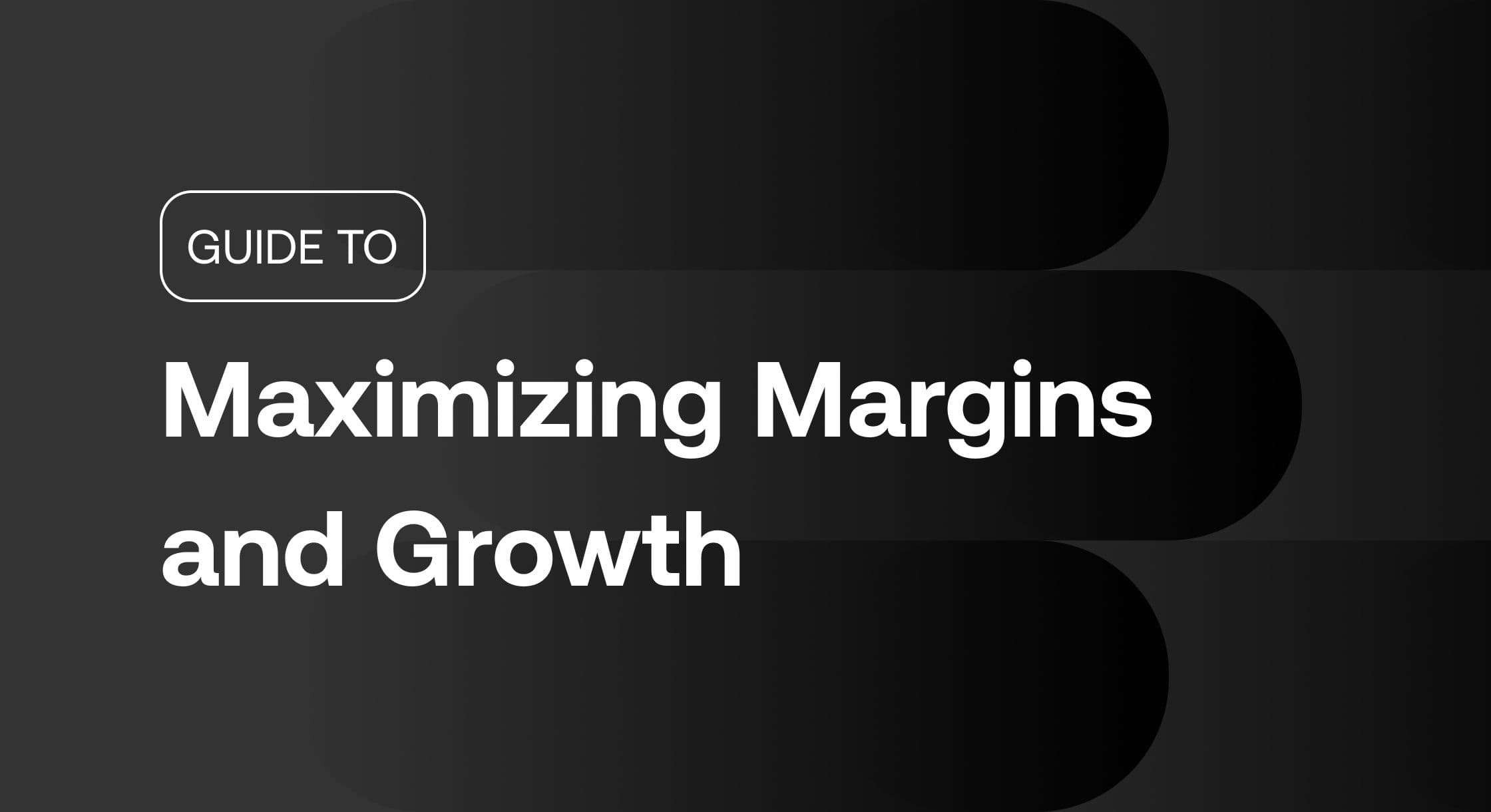/10 Profit Strategies for Walmart Marketplace Sellers: A Guide to Maximizing Margins and Growth

10 Profit Strategies for Walmart Marketplace Sellers: A Guide to Maximizing Margins and Growth
As competition intensifies on Walmart Marketplace, third-party (3P) sellers must adopt smarter, more strategic approaches to sustain and grow their profitability. Success in 2025 demands more than just listing your products. It requires data-driven pricing, operational efficiency, strategic advertising, and tools that empower Walmart Marketplace sellers to make informed decisions.
In this guide, we’ll cover key profit strategies for Walmart sellers, including pricing tactics, fulfillment optimization, advertising efficiency, inventory planning, and essential software tools that help track profit to the penny.
1. Optimize Product Pricing for Maximum Profitability
As a Walmart Marketplace seller, your pricing strategy is one of the most influential factors in both conversion and Buy Box performance on Walmart. The trick is finding the right balance between competitiveness and profitability.
Use Repricing Tools Strategically
Repricing tools like Aura help automate price changes based on competitor behavior and Buy Box eligibility. However, these tools should be configured with a minimum profit threshold to avoid undercutting margins.
Pro Tip: Set rules that only lower prices when necessary and consider time-based rules for promotions or seasonal demand.
Factor in All Costs
Always include shipping fees, referral fees, WFS storage and fulfillment fees, and advertising costs when calculating your ideal pricing range.
Consider Psychological Pricing
Ending prices with .88 or .97 is common on Walmart Marketplace and often leads to higher conversion rates compared to round numbers. Test different psychological pricing tiers to optimize for both traffic and profit.
2. Reduce Operating Costs with Walmart Fulfillment Services (WFS)
Fulfillment costs can eat into margins quickly. Walmart Fulfillment Services (WFS) provides 2-day shipping, increased visibility, and customer trust. Plus, it can reduce your need to manage warehousing, packaging, and logistics internally.
WFS Profit Benefits:
- Higher Conversion Rates: Fast, reliable delivery boosts sales.
- Reduced Overhead: Offload labor, packaging materials, and shipping costs.
- Buy Box Advantage: WFS sellers are more likely to win the Buy Box.
Tips to Minimize WFS Fees:
- Keep product dimensions optimized to avoid oversized storage charges.
- Regularly review aged inventory to avoid long-term storage fees.
- Bundle low-cost items to increase average order value and profitability.
3. Streamline Inventory and Demand Planning
Proper inventory management is key to profitability and cash flow. While you don’t want to stockout and miss out on more sales, you should also avoid overstocking inventory to maintain healthy cash flow.
Inventory Age
Aging inventory can be a silent killer of your profits. Interest costs reduce profitability if inventory sits too long. Use the Walmart Inventory & Aging Report to monitor inventory age and improve turnover.
Tips to Avoid Stockouts and Overstocking
Accurate inventory forecasting is critical to avoid stockouts and overstocks—both of which significantly hurt profits. Running out of stock not only means lost sales but also reduced search ranking and Buy Box eligibility. Maintain safety stock thresholds based on your average lead time and demand.
A good rule of thumb is to keep 30-60 days of inventory for domestic purchases and replenish fast to avoid tying up too much cash. For international sourcing, keep 120 days maximum.
Bundle & Upsell Products
Product bundling is a powerful way to:
- Increase AOV (average order value)
- Improve profitability
- Reduce low-performing inventory
Example: Bundle a high-volume hero product with a slower-moving complementary item.
Use Inventory Management Tools
Platforms like ConnectStock, Kwickmetrics, and Skubana help professional sellers forecast demand based on sales history, seasonality, and promotional campaigns.
4. Use Data to Guide Profitable Decision Making
A data-driven mindset is essential to maximizing profitability on Walmart Marketplace. Having a detailed profit and loss (P&L) report that tracks every expense is essential for accurate profitability analysis.
Profit Analytics Tools
Leverage tools like ConnectBooks, Kwickmetrics, and Teikametrics to:
- Track profit per SKU
- Analyze gross and net margins
- View profitability after advertising
A/B Test Everything
Test what works and what doesn't - from titles and images to pricing and promotions. Walmart Marketplace doesn't yet have built-in A/B testing tools, so monitor performance manually or use third-party platforms that track key metrics.
Know Your Breakeven ROAS
Understand how much you can spend to acquire a Walmart customer while still turning a profit. Calculate your breakeven ROAS with this formula:
Breakeven ROAS = Selling Price / (Cost of Goods Sold + Fees + Shipping + Ads)
5. Increase ROI Through Smarter Advertising
Walmart Connect has grown into a robust platform for Sponsored Products, Display Ads, and Video Ads. But without a solid ad strategy, it's easy to waste your budget.
Focus on High-Margin Products
Prioritize advertising for SKUs that have higher margins or top-of-funnel appeal. Avoid spending heavily on low-margin products unless you're aiming to gain visibility or traction.
Use Target ROAS Bidding
Target ROAS bidding (Return on Ad Spend) bidding allows you to optimize Walmart ad campaigns based on desired profitability goals.
Example: Set a target ROAS of 400% (4x return). Walmart Connect will then automatically adjust bids to meet that return target.
Negative Keywords and Segmentation
Use negative keywords to eliminate irrelevant traffic and segment campaigns by product category, brand, or price tier for more granular control and better results.
6. Offer Competitive Promotions Without Killing Margins
Walmart Marketplace offers various promotional levers like markdowns, reduced price badges, and deals. Use them smartly.
Time Promotions Strategically
Align deals with key retail events (e.g., Back to School, Cyber Week) and your peak selling seasons. Limit promotional windows to drive urgency and maintain margin control.
Use Conditional Promotions
Instead of sitewide discounts, offer:
- Buy One, Get One at 50% Off
- Spend $50, Save $10
- Free Shipping on Orders Over $25
These conditional offers protect your margins while boosting AOV and conversion rates.
7. Leverage Financial Tools and Capital
Even profitable businesses can struggle with cash flow. Having access to working capital helps you replenish inventory, invest in ads, and grow faster.
Consider Capital Advances
Companies like 8fig, Payoneer, and Onramp Funds offer capital advances tailored to ecommerce sellers. Walmart also partners with lenders to provide working capital programs.
Ensure the return from investing this capital outweighs the cost of borrowing.
Automate Bookkeeping and Accounting
Use accounting tools like ConnectBooks to track expenses, get clarity on profit (to the penny!), and prepare for tax time. Real-time financial visibility enables smarter decisions.
8. Build a High-Performing Product Portfolio
Not all SKUs are created equal. Focus on growing your most profitable and scalable items.
Conduct Regular SKU Rationalization
Review your SKUs quarterly to assess:
- Profitability
- Turnover rate
- Advertising ROI
Discontinue or rework underperforming products and double down on top performers.
Launch Private Label Products
Private labeling allows you to control pricing, margins, and brand perception. Walmart Marketplace is encouraging more brand-building on the platform, making this a timely strategy.
9. Outsource Strategically
Trying to do everything in-house can drain your resources. Outsourcing specific functions can help boost profitability by increasing efficiency.
Outsource:
- Product photography and Rich Media
- Listing optimization
- Advertising management (via Walmart Connect partners)
- Customer service or fulfillment (if not using WFS)
Choose agencies or freelancers with Walmart-specific experience for best results.
10. Monitor Walmart Seller Metrics to Stay Competitive
Your Walmart Marketplace seller performance directly impacts your eligibility for the Buy Box, promotions, and visibility. Regularly monitor your Seller Performance Dashboard in Walmart Seller Center to review your account performance.
Key Metrics to Track:
- On-Time Delivery Rate
- Valid Tracking Rate
- Cancellation Rate
- Refund Rate
- Customer Reviews
- Seller Response Rate
- Listing Quality Score
Use Walmart's Listing Quality Dashboard
The Listing Quality Dashboard found in Seller Center is a tool that helps you optimize titles, images, keywords, and descriptions for better visibility and conversion.
Maintain high standards across listings, logistics, and service to stay in Walmart’s good graces and increase your long-term profit potential.
Final Thoughts
Profitability on Walmart Marketplace in 2025 isn’t about doing one thing perfectly. It’s about combining operational efficiency, competitive pricing, strategic marketing, and the right tools to scale sustainably.
By tracking your numbers closely, reinvesting in top-performing areas, and continuously optimizing your approach, you can build a highly profitable business on Walmart. Sellers who embrace these strategies now will be best positioned to thrive in the years ahead.
Want to stay ahead of the curve? Start selling smarter: keep testing, keep learning, and keep refining your profit strategy to unlock Walmart ’s full potential.


